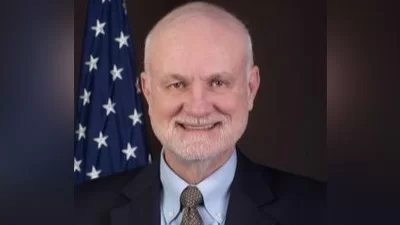Froedtert West Bend Hospital issued the following announcement on March 15.
Can waves of sound replace the surgeon’s scalpel? A national clinical trial underway within the Froedtert & the Medical College of Wisconsin Cancer Network is evaluating an innovative alternative for the treatment of primary and metastatic liver tumors.
Traditionally, the gold standard of care for these tumors has been surgery, with minimally invasive ablation and embolization procedures playing increasing roles.
“Histotripsy is completely different,” said Amanda Smolock, MD, PhD, vascular and interventional radiologist, MCW faculty member and a subinvestigator of the trial. “This technology is noninvasive and doesn’t use heat the way other ablation therapies do. It is a new method of ablation that uses focused ultrasound to mechanically destroy tissues.”
The trial is intended for people who have not responded to or are intolerant of other available therapies, or those who have relapsed after standard treatment.
Histotripsy acts on gases that are naturally present in human tissue. Sound pulses generate nano-sized “bubble clouds” of the gases, which form and collapse in microseconds. They create a cavitation effect — mechanical pressure strong enough to break apart tissue at the cellular level.
“The result is very precise ablation, occurring at a focal point of about 1 millimeter,” Dr. Smolock said. “That’s why it might be a tool to use in areas that have conventionally been off limits or unsafe with other tools, where we worry about damaging structures nearby.”
Physicians can target one or more tumors in the liver, up to a size of 3 centimeters. Using images of the liver, physicians program the location, size and shape of the tumor into the device. The machine is portable with an articulating arm ending in a curved ultrasound transmitter that is placed over the skin.
“During the procedure, the device moves around under robotic control to cover the ablation field, which can be anything we want — sphere, egg-shaped, whatever we program,” Dr. Smolock said. “Ultrasound imaging allows us to watch the ablation zone in real time. We can see the bubble cloud form precisely at the targeted area and watch tissue being destroyed.”
Images taken after the procedure assess the results, and patients will be followed for five years as part of the trial. The study is limited to eight centers in the U.S., and the Froedtert & MCW Clinical Cancer Center at Froedtert Hospital is one of only two Wisconsin sites where it is available.
“It’s exciting to study this groundbreaking technology for treating liver cancer — no punctures, no thermal energy, no radiation,” Dr. Smolock said. “We’re hopeful of its potential for use with other cancers.”
Original source can be found here.


 Alerts Sign-up
Alerts Sign-up